Formula 1 News: 2025 Hungarian GP Preview
Hungarian GP Preview: The F1 teams are heading to the Hungaroring in Budapest, for Round 14 of 24 of the 2025 FIA Formula 1 World Championship.
Formula 1 first ventured to Hungary in 1986, with a permanent facility constructed in a natural valley close to the village of Mogyorod, a short drive from the country’s vibrant capital, Budapest – a lively city known for its architecture, ruin bars, and thermal baths. Hungary’s grand prix regularly takes place in the height of the European summer, as the final round prior to the summer recess and mandatory factory shutdown. This campaign the event is celebrating an unbroken 40-year stretch on the Formula 1’s calendar, while the pits and paddock complex have been refurbished since last season’s grand prix, without any alterations to the layout of the circuit.
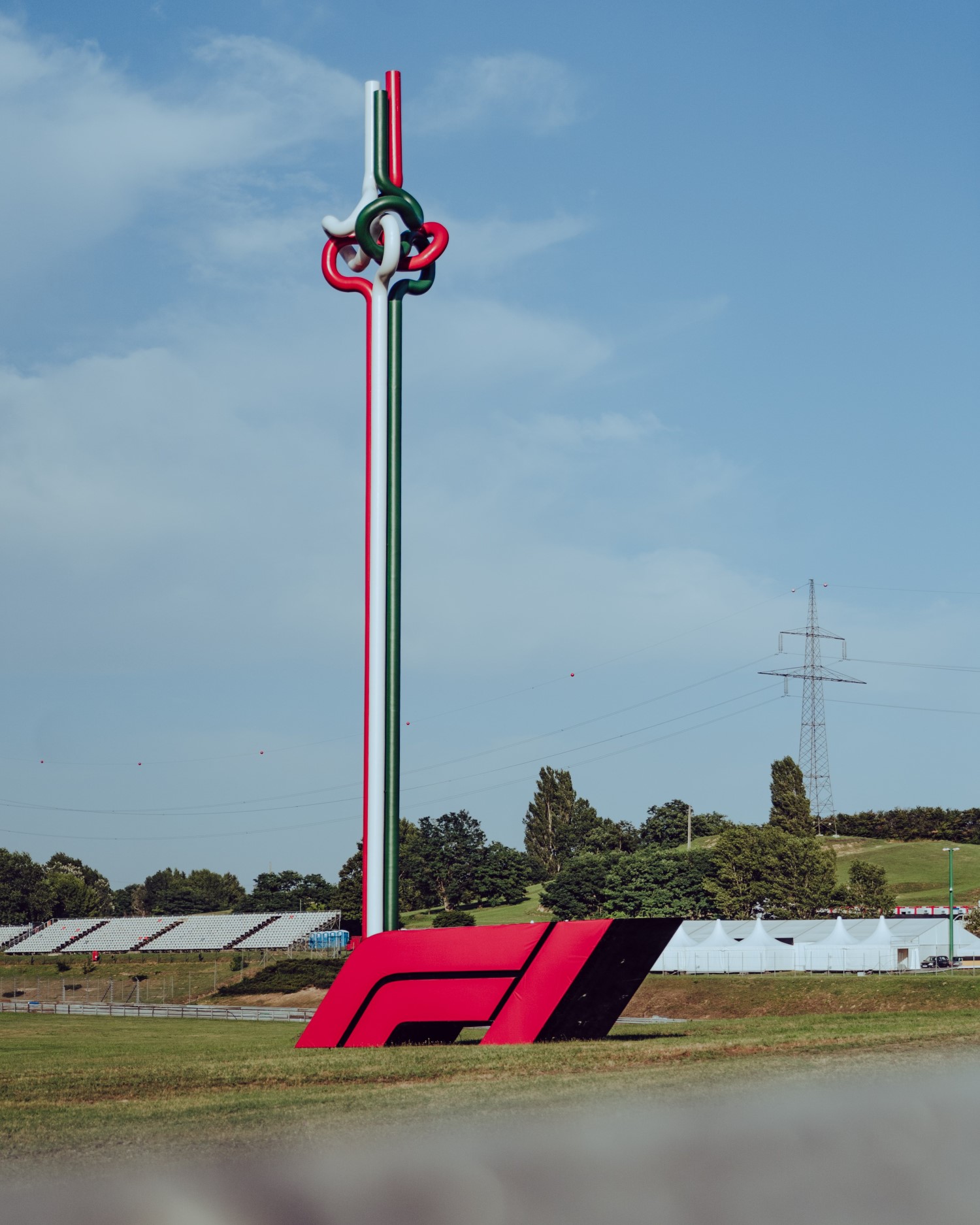
The tight and twisty 4.3km Hungaroring circuit places an emphasis on mechanical grip and high downforce levels, with several medium- and high-speed turns, and few straights. That makes overtaking a challenge, though, the downhill run to Turn 1 and long-radius Turn 2 hairpin provide opportunities for drivers to battle. Drivers also have to be conscious of tire degradation at the Hungaroring, with track temperatures regularly among the highest all season, while hot weather can also lead to sudden thunderstorms and downpours.
At a track where overtaking is no easy task, qualifying takes on great importance, which explains why 16 of the 38 editions to date have been won by the pole-sitter and only four times has it been won by a driver who started from lower than the second row of the grid.
Of the teams, McLaren has the best record here with 12 wins, followed by Williams and Ferrari, both on seven. McLaren and Mercedes share the lead when it comes to pole positions on nine, with Ferrari third on eight. Ferrari tops the table for podium places with 29 ahead of McLaren on 25 and Williams on 18.
Lewis Hamilton is the most successful driver here with eight wins and the seven-time world champion also holds the record for pole positions (9) and podium finishes (11). Of the teams, McLaren leads the way on 11 victories ahead of Williams and Ferrari, joint second on seven, while Mercedes has the most poles (9), one more than McLaren and Ferrari, the latter topping the table for the most podium finishes with 26 ahead of McLaren (23) and Williams (18). Five drivers have taken their maiden Formula 1 wins at this track, of which Fernando Alonso (2003) and Esteban Ocon (2021) are on the entry list this weekend. The others are Damon Hill (1993), Jenson Button (2006) and Heikki Kovalainen (2008).
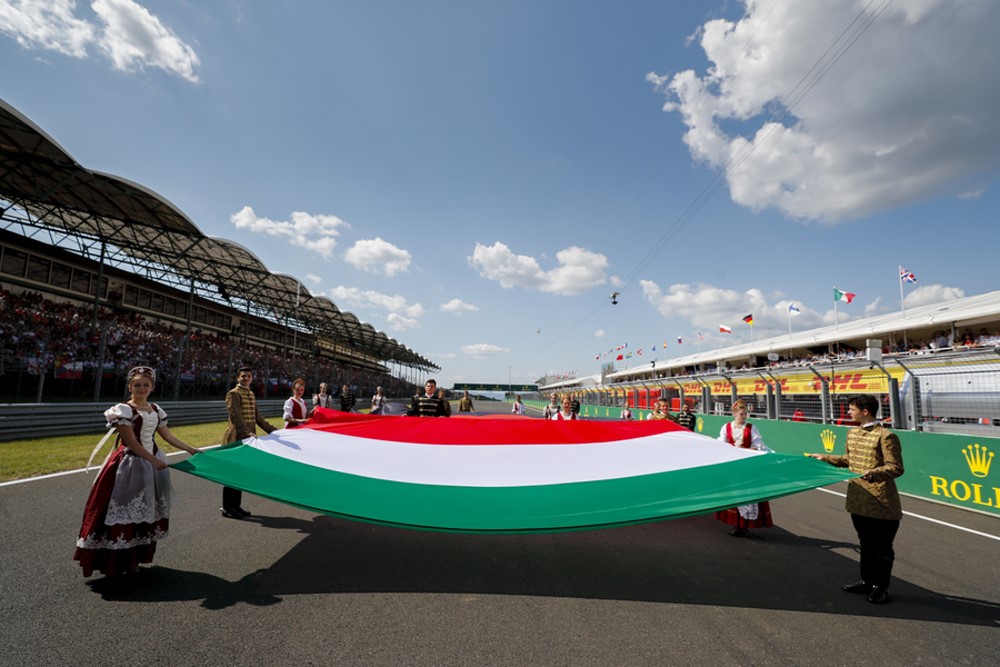
In the dog days of summer, the Formula One caravan arrives in Hungary for one of the classic races of the calendar: on a track, in Mogyoród on the outskirts of Budapest, that underwent only subtle changes since its first appearance in 1986, one that produced so many shocks and upsets in recent years, in front of legions of fans ready to brave the elements.
With a welcome summer break on the horizon, a chance for crews and workers at home to catch a breath and recover, notching up a good result right now would mean heading into the end of summer with their heads held high, brimming with confidence and with high morale.
Formula 1’s association with Hungary stretches back to 1986, when a permanent facility was constructed in a natural bowl close to the village of Mogyorod, a short journey from downtown Budapest, which was then still behind the Iron Curtain.
The Hungarian Grand Prix quickly established itself as a popular event, facilitated by its convenient central European location that attracted a breadth of fans, as well as the nearby presence of the lively Budapest. The city, which straddles the iconic Danube River, is famous for its thermal baths, vibrant ruin bars, and range of dramatic architecture.

The Hungaroring has the second-longest unbroken streak on Formula 1’s calendar, having been held annually since its debut 37 years ago, and is a tricky and narrow ribbon of tarmac. Drivers have likened the Hungaroring to a go-kart track, with little in the way of straight-line sections, and several twiddly low-medium speed corners interlinked.
Nevertheless, there remain high-speed challenges, such as the uphill blind left-hander of turn 4 and sweeping turn 11, while passing chances frequently present themselves into turn 1 or the cutback into turn 2. The weekend’s action typically takes place in hot conditions, leading to high track surface temperatures, though thunderstorms and heavy rain showers can quickly bubble up.
Track Upgrades
The Hungaroring facility is currently undergoing a major transformation. Firstly, the paddock area was refurbished and this year, the main changes relate to the pit lane and the main straight, as well the pit complex and the main grandstand.
The grid area and the pit lane have been resurfaced, using 860 tons of a specially designed mix, using bitumen with a higher softening point. The asphalt was laid with the aim of minimizing undulations to provide a more consistent surface. The new surface has already been used when GT races were held here in early July and it will be analyzed in the next few days to check grip levels.
Usually, track evolution over the weekend is very high here, especially during the first two days. Graining could put in an appearance during Friday free practice, before gradually decreasing the more the track gets rubbered-in. High thermal degradation is a factor drivers will have to deal with even over a flying lap in qualifying on the Soft. If it is not looked after properly, it could create problems in the final two corners.
Tires
The Hungaroring provides the backdrop to the last few days of Formula 1 track action prior to the summer break. This weekend’s race will be the fortieth anniversary of the Hungarian Grand Prix and the Hungaroring track will also be in use on the Tuesday and Wednesday, 5 and 6 August, when Pirelli is running a 2026 tire development test. Ferrari, Racing Bulls and McLaren are all taking part for one day, while Alpine is running on both days. The test is aimed at evaluating tire constructions for next year as, in line with regulations, these must be homologated by 1st September, as well evaluating some prototype compounds. In this case, these have to be homologated by 15th December. After the Hungaroring session, there are a further six days of testing planned, two at Monza, two at Mugello and two in Mexico City.
The compounds
The trio of slick tire compounds is the same as last year: C3 as Hard, C4 as Medium and C5 as Soft.
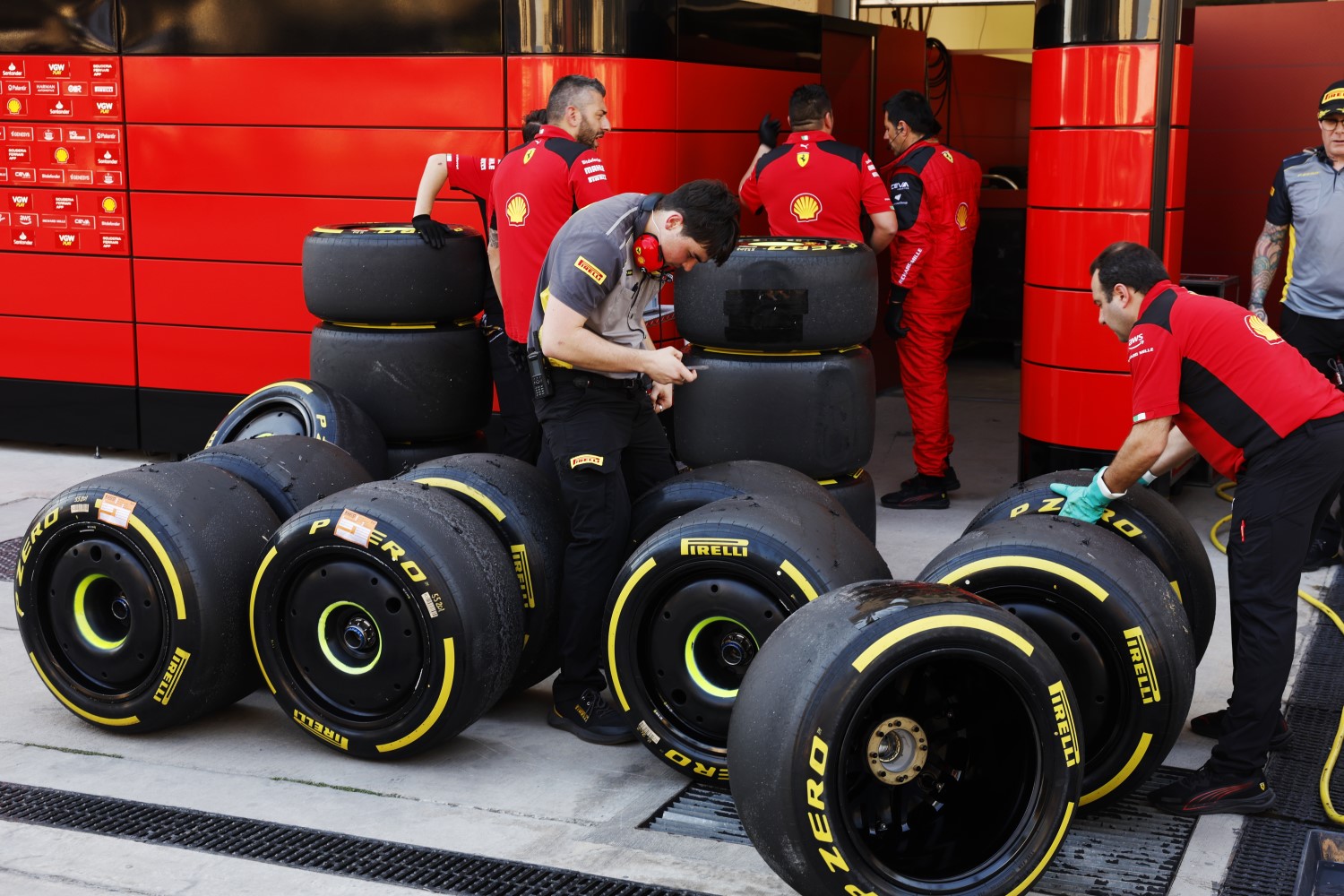
Up until last year, these would have been the softest tires of all, but this year, the C6 was introduced. However, the new compound would be too extreme a choice for a track that exerts this level of energy density on the tires for every lap. Although the actual loads are not that high in absolute terms, the fact that the lap is short means that it increases cumulatively and significantly with each lap. Another factor that plays its part is the high temperature that usually accompanies the Hungarian weekend, leading to predominantly thermal degradation, exacerbated by the very dark track surface. In fact, last year’s race here saw the highest recorded track temperature of the season, at 58.6 °C.
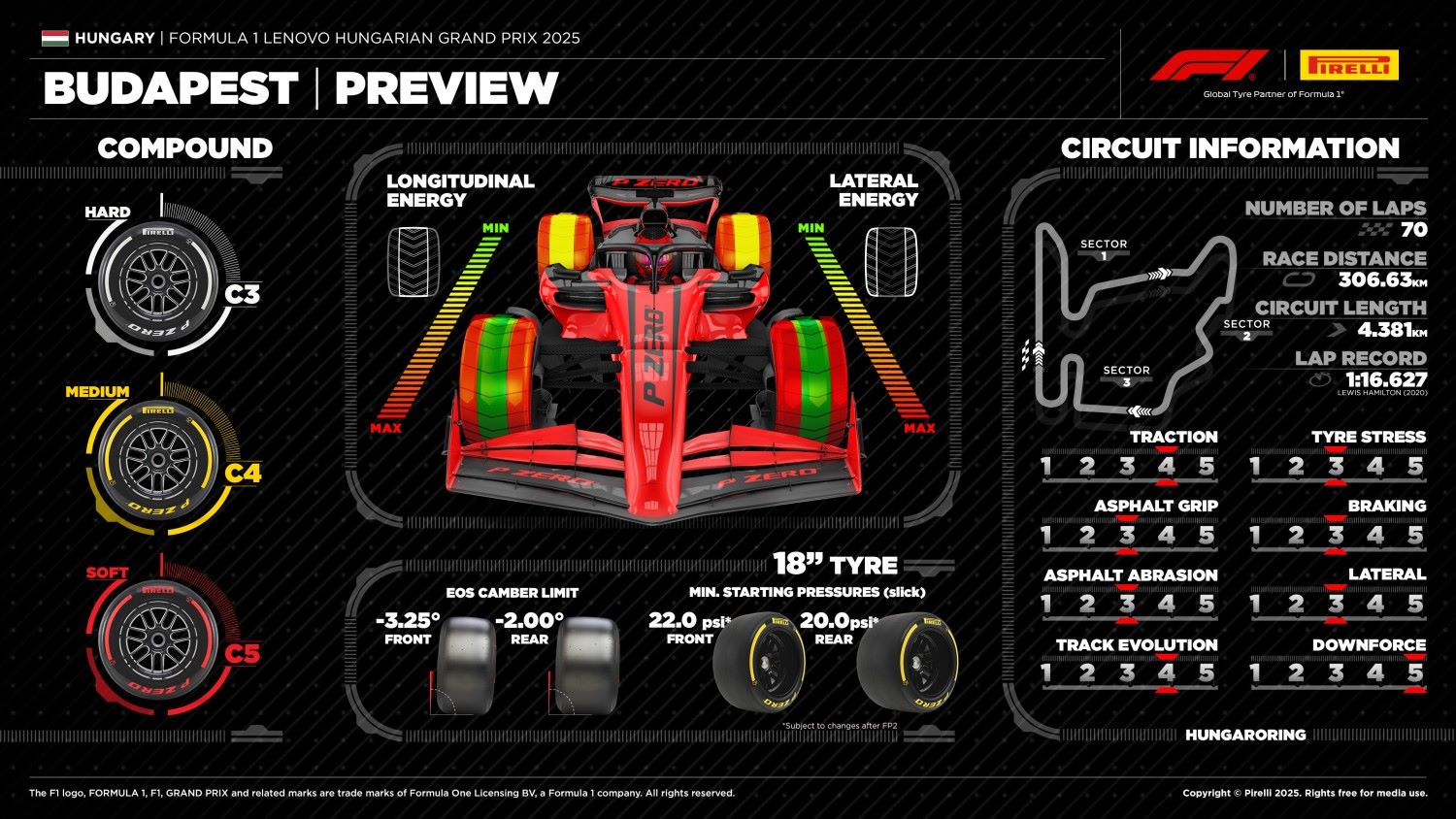
Early Weather Forecast
The Hungarian Grand Prix is expected to have a mixed weather forecast, with potential for sunny conditions, light rain, and even thundery showers.
Friday is likely to see thundery showers and light winds, with a chance of precipitation.
Saturday is forecast for sunny intervals and light winds, with a chance of light rain in the evening.
Sunday, race day, is predicted to be sunny with a gentle breeze and a low chance of precipitation.
Circuit Insight
Overtaking: Races at Budapest have seen just 24 passes per race on average – ignoring starts and restarts – with most taking place at Turns One, Two and Three and 86 percent of overtakes using DRS. The Hungaroring is one of the toughest circuits to pass on in F1
Strategy: The softest tires in the Pirelli range are available this weekend and high tire degradation could push drivers to stop twice in the dry. This weekend Pirelli’s Alternative Tire Allocation is in place giving drivers 11 sets of slicks instead of 13. Furthermore, Q1 must be run on Hards, Q2 on Mediums, and Q3 on Softs.
Safety Car: The chance of a mid-race Safety Car is less likely than it may appear. The past five races have only had very early interventions. The Virtual Safety Car has only been used twice – both in 2018. This makes it difficult to incorporate Safety Car interventions into race strategy.
Downforce: You need plenty of downforce at this track, similar levels to Monaco
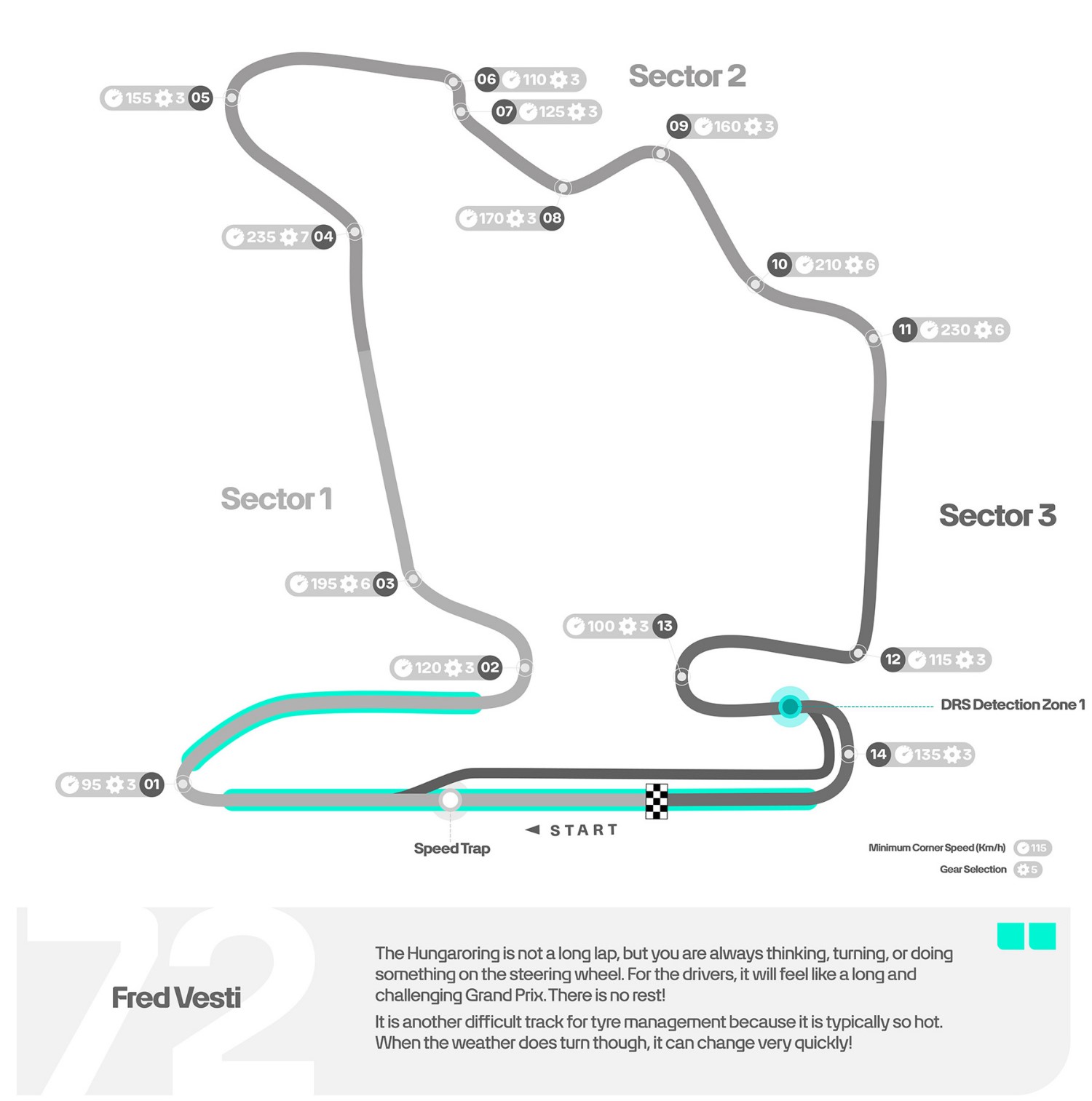
Unlocking the Lap
Turn Four, an uphill fast left-hander with a blind exit, is one of the hardest corners on the lap. The curb on the entry can unsettle the car if it is used too much. The exit is also tricky and is an area where drivers can easily fall foul of track limits.
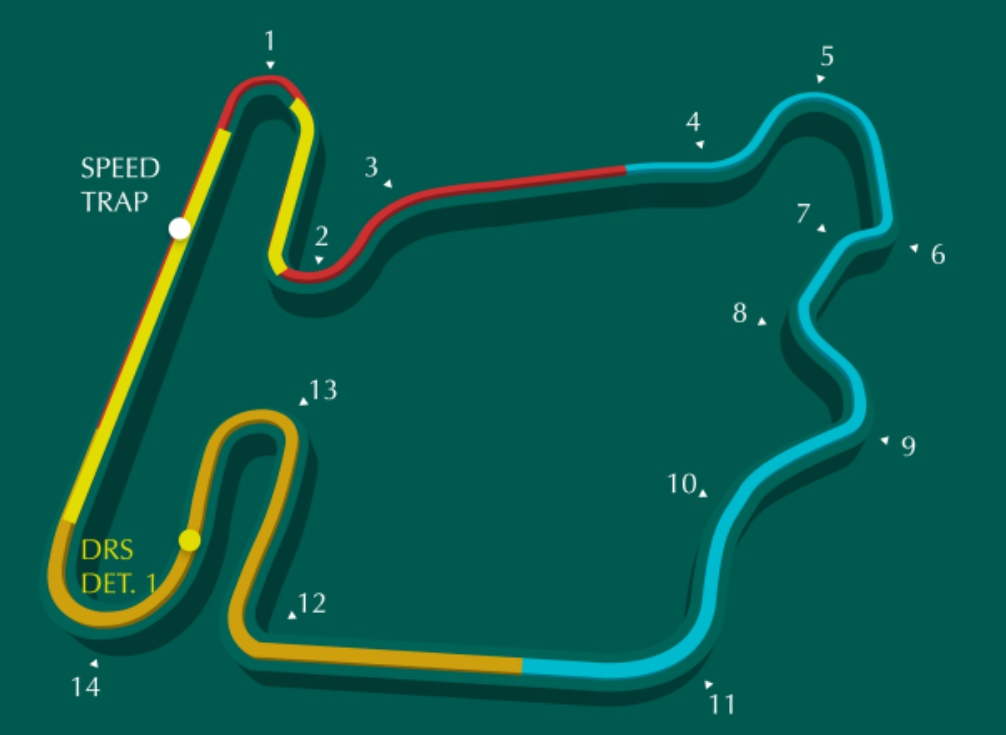
Shortly after this is the Turn Six-Seven chicane – one of the slowest points on the track but also one of the trickiest. A quick flick to the right and the left, it is easy to overshoot the braking zone, which exacerbates each turn. And the grassy run-off is easy to clip on the right…
The long 180-degree right-hander that closes the lap (Turn 14) has traditionally been a tough corner through which to follow another car. With this year’s ground-effect rules, it should make things easier – and promote passing into Turn One. It is another corner where track limits can come into play.

Fact File: Hungarian Grand Prix
- Hungary first appeared on the calendar in 1986 and has hosted a race in every single season since.
- The Hungarian Grand Prix weekend can be one of the hottest of the year, with air temperatures know to reach anywhere up to 33°C.
- Correspondingly, track temperatures tend to also be high with an average of 36°C rising to a maximum of just over 50°C.
- The amount of braking activity, with six events across the lap, coupled with the high ambient temperatures and the absence of long straights, make the circuit exceptionally taxing on the brakes.
- The low average speed at the Hungaroring also limits airflow, which makes it even more of a challenge to cool the brakes.
- The circuit features 14 corners, six to the left and eight to the right. Many of these follow one after another in quick succession, meaning a well-balanced car that can handle directional changes is important for lap time.
- The Hungaroring has one of the lowest top speeds of the season at just over 315 km/h. That is perhaps no surprise given the cars spend just over 10 seconds on a straight over the course of a fast lap, with the remaining time spent cornering.
- Those track characteristics are also reflected in the full throttle percentage, which is just 53% of the lap time and 60% of the lap distance. This are some of the lowest figures we see across the year.
- Despite a relatively short start/finish straight, the distance from pole position to the braking zone for Turn 1 measures 472 meters, the fourth-longest run of the season.
- Given the prevalence of slower corners, good traction is important here. That is why this circuit puts the rear tires under a lot of stress.
